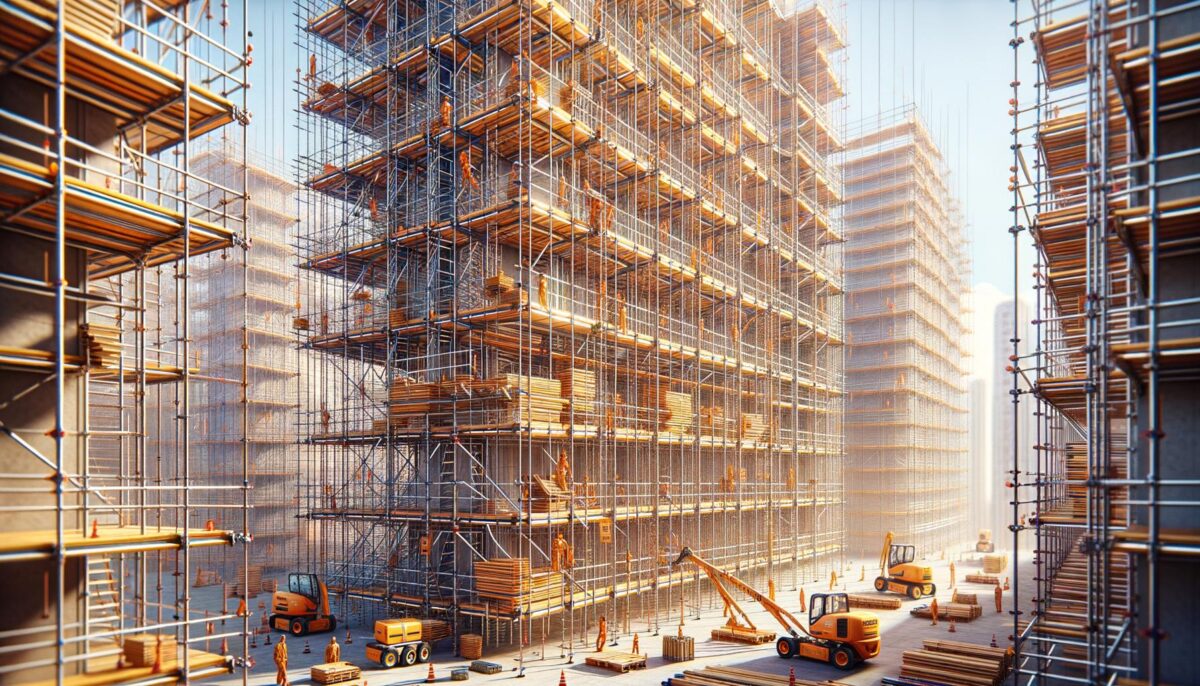Understanding the Importance of Scaffolding in Construction
Scaffolding is a critical component in the construction industry, offering stability and support for various tasks ranging from simple repairs to major building projects. Its primary purpose is to provide a safe platform for workers to perform their tasks at heights. By understanding the importance of scaffolding, you can make informed decisions that enhance project efficiency and safety.
Scaffolding helps in achieving two major goals:
- Improved Safety: Properly erected scaffolding reduces the risk of falls, which is one of the leading causes of accidents in construction.
- Enhanced Accessibility: It allows workers to access hard-to-reach areas and perform tasks with greater ease and precision.
Whether you’re working on a residential renovation or constructing a commercial building, choosing the right scaffolding system is crucial to meeting project deadlines safely and efficiently.
Types of Scaffolding Available
The scaffolding market offers a range of solutions tailored to different construction needs. Understanding these types can guide you in selecting the most suitable option for your specific project requirements. Here are some common types of scaffolding:
- Single Scaffolding: Primarily used for brick masonry, this consists of a single frame of standards, ledgers, and putlogs.
- Double Scaffolding: Often used for stone masonry, it includes two frames to provide additional support.
- Steel Scaffolding: Known for its durability and ability to bear heavy loads, making it suitable for large construction projects.
- Suspended Scaffolding: Ideal for tasks like window cleaning or painting, where the scaffolding is suspended from the roof.
- Patented Scaffolding: Made of pre-fabricated components, offering enhanced speed and convenience in assembly and disassembly.
Each type of scaffolding has its unique features, benefits, and limitations. Therefore, it’s essential to assess your project needs before selecting a scaffolding solution.
Factors to Consider When Choosing Scaffolding
With various scaffolding solutions available, it’s vital to consider several factors to ensure you select the best fit for your project. Understanding these factors will help in optimizing both safety and cost-efficiency.
Here are key considerations to keep in mind:
- Project Scale: Larger projects might require more robust scaffolding systems like steel scaffolding, while smaller projects can utilize less intensive systems.
- Load Capacity: Ensure that the scaffolding can safely support the weight of workers and materials.
- Accessibility: Consider how easily workers can move around the scaffolding and reach all required areas of the construction site.
- Material: The choice between wooden, steel, or aluminum scaffolding can affect durability, cost, and suitability for specific tasks.
- Regulatory Compliance: Always ensure that any scaffolding solution complies with local safety regulations and standards.
Taking these factors into account will help in making a well-informed decision that aligns with your project’s specific demands.
Options for Scaffolding Rental and Purchase
When it comes to scaffolding, you have the choice to either rent or purchase, each with its advantages and drawbacks. Understanding these can aid you in making a decision that benefits your project’s budget and timeline.
Renting Scaffolding is often a cost-effective option for short-term or infrequent projects:
- Reduces upfront costs, making it easier to manage expenses.
- Provides access to a variety of scaffolding types to suit different tasks and projects.
- Eliminates the need for long-term storage and maintenance facilities.
Purchasing Scaffolding can be beneficial for construction companies with ongoing projects:
- Offers long-term cost savings compared to repeated rentals.
- Provides immediate availability for any future projects, reducing lead times.
- Allows customization to meet specific project needs.
Your decision to rent or purchase scaffolding should be guided by the length and frequency of your construction projects, as well as your budget considerations.
Ensuring Safe Use of Scaffolding
Scaffolding safety is paramount, as improper use can lead to severe accidents. Implementing safety measures ensures not just compliance with legal standards but also the well-being of your team.
Here are measures to ensure scaffolding safety:
- Regular Inspections: Conduct routine checks before and after use to detect any defects or wear that could compromise safety.
- Training: Ensure that workers are properly trained in safe scaffolding use and understand the associated risks.
- Use of Safety Gear: Equip workers with appropriate safety gear such as helmets, harnesses, and non-slip footwear.
- Secure Setup: Always set up scaffolding on stable ground and secure it against movement.
By adhering to these safety guidelines, you can create a safer construction environment conducive to productive work.
Conclusion: Making Informed Choices for Your Scaffolding Needs
Scaffolding is a vital element of any construction project, providing the necessary support and safety for workers to perform their tasks efficiently. By evaluating the types available, considering key factors, and deciding between renting and purchasing, you can select a scaffolding solution that meets your needs and budget. Prioritizing safety through training and inspections ensures that your scaffolding system benefits your team and project outcomes. With the right scaffolding, you can enhance both the productivity and safety of your construction endeavors.
